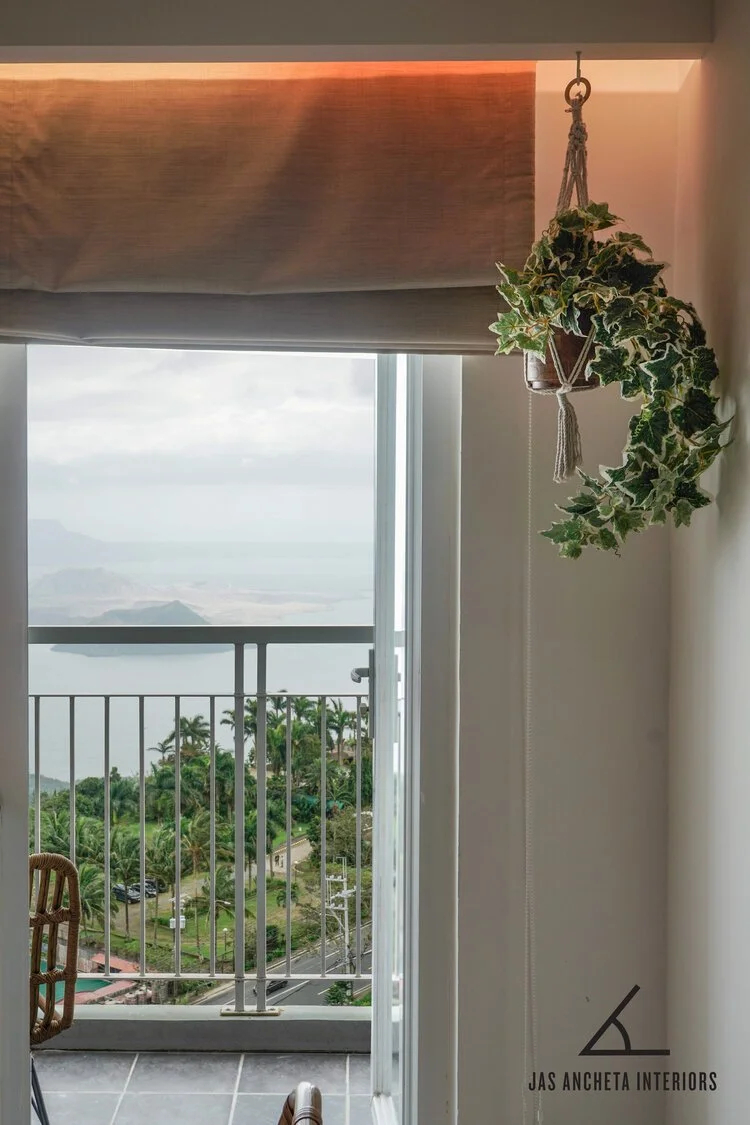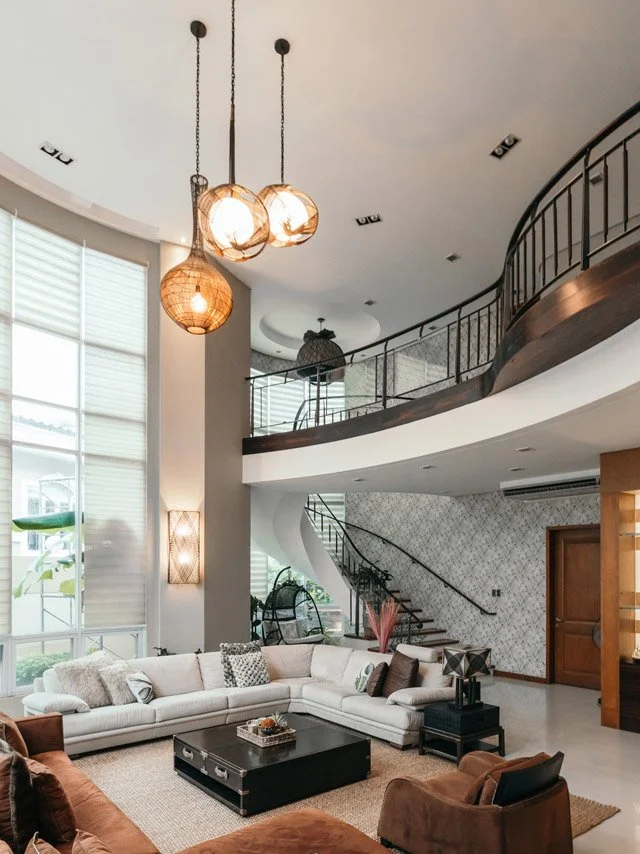How do you know who is the right designer for you?
Read MoreAdapting to the New Normal
This covid-19 crisis has changed the way we live and work. Suddenly, all but essential businesses are shut down and everyone else is encouraged to stay at home. In this light, how do we adapt our homes and our businesses to reduce the incidence of covid-19?
Ideally, for both homes and business, we should reduce instances where our hands touch surfaces. What does that entail? Barring economical issues, having a smart space will help in this endeavour.
For Homes:
Automatic door openers/ door locks - perhaps can be voice activated for Alexa
Install automatic faucets with sensors
Put sensor lights or voice activated lights
Placing automatic sanitisers at the entry.
Invest in an air purifier, whether it is an electric purifier or better yet, take care of indoor plants. More family members will stay at home. For most, maintaining good health is critical. Poor indoor air quality coupled with poor ventilation are health hazards. For businesses, investing in both an air purifier and perhaps some plants will help in sustaining good indoor air quality.
Unfortunately, with technology comes price. So what do we do? You can start retrofitting your space slowly.
Determine the space that you spend the most time in. Start with this area. Of course, if you just don’t have the budget for it, sanitise daily with a bleach-water solution (depending on the surface treated) or a disinfectant spray like Lysol.
For Restaurants:
Cashless transactions using bank transfer, Paypal, Gcash, Paymaya or any other online payment facility to help your customers
Take Out/ Pick-Up Counter - Have a separate counter where the customer does not need to go in your store (preferably, if possible) to lessen contact.
Sanitizing area - Dedicate an area at the entry for sanitising. Have a sanitising mat and hand sanitizers or alcohol at the entry.
Organise your delivery system. It is vital now, more than ever, to have a good delivery system for taking orders and delivering them to your customers. Establish safety guidelines for your staff (from the kitchen all the way to delivery) to ensure food sanitation is adhered to.
Kitchens - Make sure your chefs follow strict sanitation procedures. Chefs are trained for food safety. If your crew is not aware of this, check out this link from FDA .
Dining areas - Until the crisis is over or until further notice, dining in person is not allowed. This pandemic may last for quite some time, so be prepared to amp up your delivery and take out options to ensure business growth.
Secrets of Indoor Gardening in an Air-conditioned Room
In a tropical country like the Philippines, airconditioning is a must. We need plants that are hardy enough to live indoors and stand the dry, air-conditioned room.
Read MoreThe Bolder, the Better: Cost-Conscious Decorating for Couples Moving in Together
Guest Author: Natalie Jones
Today, we have a guest writer, Natalie Jones. Hope her advice resonates with you!
Moving in with a significant other is an exciting time, a chance to learn more about each other and grow as a couple. But it’s also a time when misunderstanding and conflict can leave you wondering, “What was I thinking?” It’s difficult enough deciding who will pay what bills, how to divide the household chores, and who should be doing the grocery shopping. It’s also a time when money may be tight and in short supply for decorating. There’s no need to fall out over the expense of decorating your home, especially if you see eye to eye when it comes to artwork, furniture, colors, and other visual elements. Consider the following budget-friendly tips on how to make it work.
Communicate
Spend some time talking about your shared interior design expectations. Save the specifics for later; start with a very general, even philosophical, conversation about likes and dislikes. There will be some compromising to do, and easing into the subject can remove some of the stress from the situation. So, put off discussing where his beer-stained upholstered recliner should go (other than the trash), or what to do with her vintage collection of unicorn artwork. Sometimes, agreeing to move a prized object to the back room instead of the living room can head off a potentially relationship-damaging disagreement. Also, look for inexpensive ways to decorate, such as using commonplace items you have no other use for.
Discuss Closet Space
Sharing space in the bedroom closet demonstrates the ability to compromise, which will certainly carry on to your decorating efforts. You can effectively organize your space by categorizing all the clothing and accessories you know you’re going to wear regularly. Donate the items that have been untouched for at least a year, and store the attire that’s not appropriate for the current season. You can even create more space with an additional rod and shelves. Your closet’s appearance is just as mood-lifting as the adorned walls of your home, so take the time to add matching hangers and quality lighting.
Emphasize Eclecticism
If you’re expecting the place to be as pristinely coordinated as your Great Aunt Tilly’s house, you’re probably headed for a disappointment. Why copy someone else’s style anyway? Decorating a home on a budget and with limited space is a challenge, an opportunity to embrace and appreciate an eclectic approach that will come to define you and your partner’s identity as a couple. Eclecticism will be easier -- and more fun. It can all work together with a little bit of juxtaposition and experimentation. Go ahead and combine that chrome floor lamp with the homemade table made of distressed river wood. If you need to make a purchase, try shopping at IKEA for fun and affordable eclectic pieces that will still leave money in your wallet. Even better: IKEA offers buying guides for each room in your room, which can be a great starting place. There’s nothing wrong with being economical as well as eclectic.
Embrace Whimsy
One person’s juvenilia is another’s masterpiece. Don’t be afraid to go for a bold look that no visitor will forget. What about decorating the back wall of your den with an array of shower heads (vintage and contemporary) that you can get on sale or rehab out of the trash? Or, why not class up your living room with a Gone with the Wind-style curtain as a decorative wall hanging? Decorative plates are another affordable and uniquely appealing design element, arranged in an assortment of sizes, styles, and colors.
Try It Before Dismissing It
If your first place together is on the small side, you have limited decorating space. That’s a great opportunity to get creative, even edgy, with your decor. The beauty of decorating is that you don’t have to spend much money or stay with a look if you decide later you hate it, so give it a try even if you’re uncertain at first. You never know -- it might prove ideal and could save a lot of money. A good rule of thumb is to leave it in place for a few days before making a final decision. Decorating eclectically on the cheap is a fun adventure and a worthwhile money-saving venture.
Give It Time
Getting used to each other takes time, so there’s no reason to assume that it won’t take some time to get into your decorating “groove.” Take your time; it’s a process, an evolution if you like, but you’ll know when it feels right. And never stop communicating openly as you work through it.
How To Organize A Pantry That Works For You
A pantry is one of the most important areas in the kitchen you should definitely plan for. One of the things that wastes a lot of time is when all of your ingredients are in disarray and it takes you forever to start cooking.
1. Make a List.
The very first thing you should do is take a list of what items you need to stock in your pantry. From this, you will know how much space to allot for each category and how to store it. You can use mason jars, baskets, bins, under cabinet shelves, stackable bins, lazy susans.
2. Designate each shelf and group according to category.
Location of each category should be based on frequency of use. That means, your most used items should be in the middle, the least at the very top, bottom can contain bottles, paper goods, dog food. Store spices alphabetically and label all containers.
3. Use the same container for similar items.
To maintain a clean, organized look, use the same containers. If you have extra space on the top portion of the shelf, use a wire shelf that you can slide into the top part, just like the photo seen below. That way, all space is maximized. It's best to use clear containers so you can easily see what's inside.
4. Label all items.
via Creativity Exchange
Yes, it’s a tedious task but somebody has to do it. Why? This is food we’re talking about. Especially for those items that you choose to remove from its original packaging, you should place the expiration date too. If you have fancy writing skills, go ahead and write on a blackboard type sticker. Another option is to buy sticker paper and print out the labels on the computer. I've found these free printable labels for you to use.
There's one thing that you need to remember: Personalize your pantry according to your needs.
Every person is different. Some may need a space for baking materials, others might need a whole area for coffee. The key here is planning for each area and allowing for the right amount of space.
If you need more help, e-mail me and we can design your own kitchen made especially for you!
Check out the latest promos/sales and fairs in the metro!
What They Don't Tell You When Building Your Space
Building your space is not always all it’s racked up to be. It can be a nightmare or it can be a daydream.
Read More




















